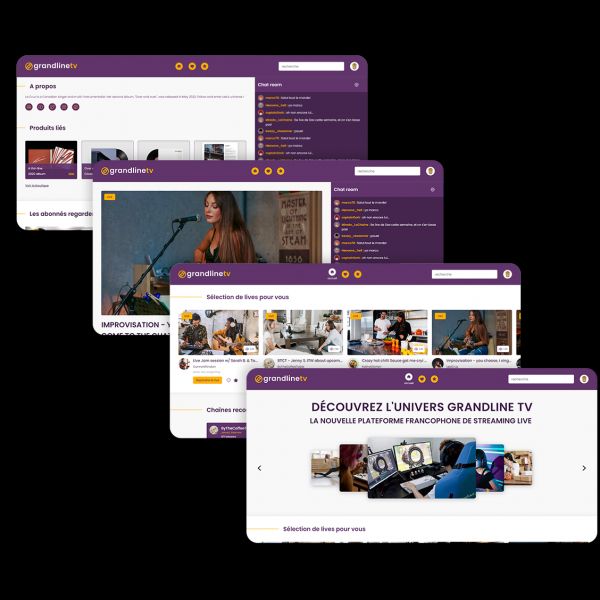In today’s digital world, streaming platforms are more popular than ever. With millions of users consuming content daily, creer une plateforme de streaming can be a lucrative business. However, standing out in this competitive market requires careful planning, innovation, and execution. This guide will walk you through the essential steps to create a successful streaming platform from concept to launch.
1. Defining Your Niche and Target Audience
Before diving into development, it’s crucial to define your niche. Ask yourself:
- What type of content will your platform offer? (Movies, music, live events, educational content, etc.)
- Who is your target audience? (Gamers, movie lovers, fitness enthusiasts, etc.)
- What will make your platform unique?
Understanding your audience’s preferences will help shape the features and design of your platform.
2. Choosing the Right Business Model
There are several monetization models for a streaming platform. You can choose one or combine multiple strategies:
- Subscription-Based (SVOD) – Users pay a monthly or yearly fee to access content (e.g., Netflix, Disney+).
- Ad-Supported (AVOD) – Free content with advertisements (e.g., YouTube, Pluto TV).
- Pay-Per-View (TVOD) – Users pay for individual content (e.g., Apple TV, Amazon Prime Rentals).
- Hybrid Model – A mix of subscription and ad-supported models.
Selecting the right business model will impact your revenue and audience reach.
3. Essential Features for a Competitive Streaming Platform
To stand out, your platform should offer key features that enhance user experience:
- User-Friendly Interface – A simple, intuitive design that allows easy navigation.
- High-Quality Streaming – Support for HD and 4K content with adaptive bitrate streaming.
- Personalized Recommendations – AI-driven content suggestions based on user behavior.
- Multiple Device Compatibility – Ensure seamless streaming on mobile, desktop, and smart TVs.
- Secure Payment Integration – Safe and flexible payment options for subscriptions or purchases.
- Live Streaming Support – If applicable, include real-time broadcasting features.
- Offline Viewing – Allow users to download content for offline access.
4. Choosing the Right Technology Stack
Your platform’s performance depends on the right technology stack. Key components include:
- Frontend: React, Angular, or Vue.js for a smooth user interface.
- Backend: Node.js, Django, or Ruby on Rails for server-side logic.
- Database: MySQL, PostgreSQL, or MongoDB for storing user and content data.
- CDN (Content Delivery Network): Cloudflare or AWS CloudFront for fast content delivery.
- Cloud Storage: AWS S3, Google Cloud Storage, or Azure for secure content hosting.
- Streaming Protocols: HLS (HTTP Live Streaming) or DASH for efficient media delivery.
5. Licensing and Content Acquisition
If you plan to stream licensed content, ensure you obtain proper rights from content creators, distributors, or production companies. Alternatively, you can create and host original content to avoid licensing issues and attract exclusive subscribers.
6. Developing and Testing Your Platform
Once the planning is complete, begin the development process:
- MVP (Minimum Viable Product): Start with a basic version to test core functionalities.
- Beta Testing: Invite a small group of users to test and provide feedback.
- Bug Fixes and Enhancements: Improve the platform based on user feedback before full-scale deployment.
7. Marketing and User Acquisition Strategies
A great streaming platform needs effective marketing to attract users. Consider these strategies:
- SEO Optimization: Optimize your platform for search engines to drive organic traffic.
- Social Media Marketing: Leverage platforms like Facebook, Instagram, and Twitter for promotions.
- Influencer Collaborations: Partner with content creators to reach a wider audience.
- Referral Programs: Encourage users to invite friends in exchange for rewards.
- Paid Advertising: Invest in Google Ads, YouTube Ads, and social media promotions.
8. Launch and Scaling
After testing and marketing, it’s time to launch your platform. Post-launch strategies include:
- Monitoring Performance: Track user engagement and server performance.
- Regular Updates: Continuously improve features and fix bugs.
- Expanding Content Library: Add new content to retain subscribers.
- Scaling Infrastructure: Upgrade servers and resources as your user base grows.
Conclusion
Creer une plateforme de streaming requires careful planning, technical expertise, and a strong marketing strategy. By focusing on user experience, content quality, and innovative features, you can build a successful streaming service that stands out in the crowded market.
Are you ready to start your streaming platform? Visit FlexiApps to get expert guidance and turn your vision into reality!
